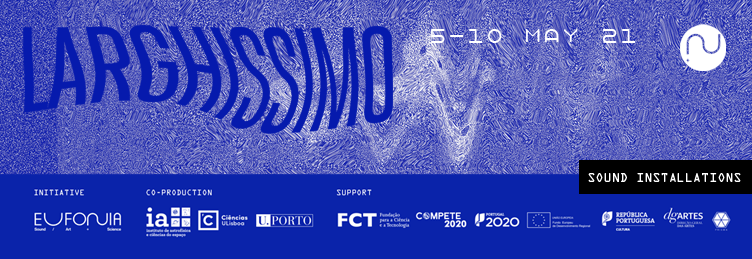
If your curiosity brought you here, maybe it’s because you are visiting, or have visited the collective exhibition Larghissimo in the Prisma studio, in Lisbon, an Eufonia production with the collaboration of the Instituto de Astrofísica e Ciências do Espaço (IA).
Larghissimo is an immersive space where the visitor interacts with sounds, in an analogy with the interaction between matter, space-time and gravitational waves. The information in this page allows you to learn more and extract more meanings from the Larghissimo experience. Be it the beginning of an invisible Universe to discover.
(Extended information and additional resources in Portuguese).
To go faster is to arrive late
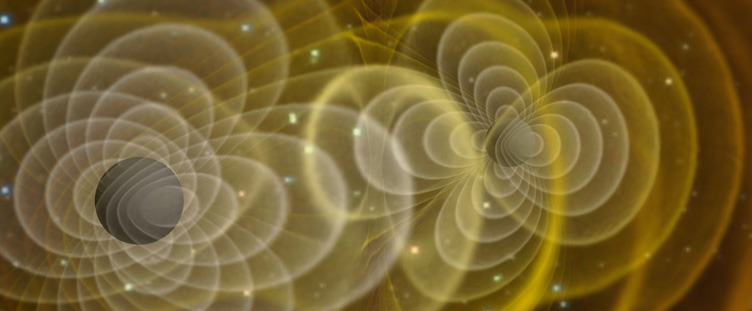
Credits: Henze, NASA.
Time is not absolute nor uniform, it doesn’t progress at the same rhythm everywhere. Time, for a body with mass that is moving, such as a clock, varies with the speed at which it moves.
The ticking of the clock will be slower than that of a clock that is still, and the faster it moves, the more it will fall behind that one.
This change is unnoticeable at the rates at which we move in our daily life, but if we travelled on an hypothetical engine that could get close to the speed of light, everything in us would run much slower: the ticking of our clock, the chemical reactions of our metabolism, our thoughts and our ageing.
Matter “delays” time
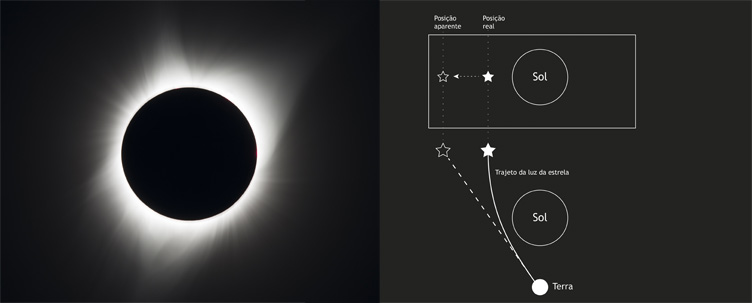
Credits: NASA/Aubrey Gemignani (solar eclipse); IA (infographic).
Matter also has the power to slow down the stream of time. If we move away from Earth, our time will accelerate in relation to the rhythm at which it flows on the surface.
The proximity to a massive body, such as Earth or the Sun, slows down the rhythm of time, in comparison to a point in a location further away.
Our feet on the ground, and the Sun always close by
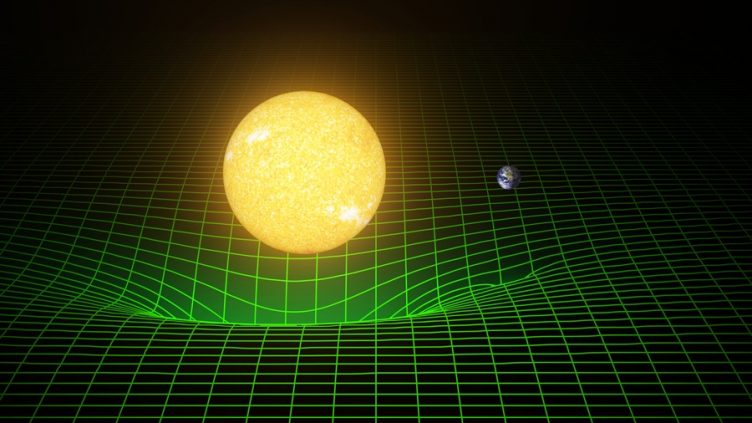
Credits: SXS, the Simulating eXtreme Spacetimes (SXS) project (http://www.black-holes.org)
Time, however counter-intuitive it might seem, is a fourth dimension, joining the three dimensions of space: width, depth and height. These four dimensions form space-time.
If there was no matter in the Universe, space-time would be flat. Bodies with mass are what deforms this plain, creating holes, valleys and wells in four dimensions. For instance, Earth produces a hole in space-time. It is this hole that makes us “slide” back to the ground every time we jump.
Quakes in space and in time
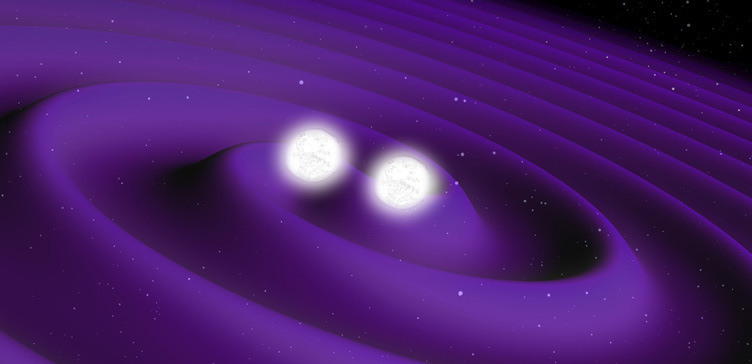
Credits: ESA
The curvature of space-time is constantly being shaped by the bodies that move across it. When bodies with mass speed up or slow down their movement, or change direction, they produce a perturbation in the “landform” of space-time that propagates like a wave. It’s a gravitational wave.
A gravitational wave stretches and shrinks space, and accelerates and decelerates the ticking of clocks, periodically.
We can visualise gravitational waves perturbing the four-dimensional surface of space-time as the concentric waves produced on the surface of a lake by a duck that agitates it as it swims across.
We produce gravitational waves
When we walk, or move our hands, we produce gravitational waves, but these are of an unimaginably small scale.
For a long time it was thought that it would never be possible to detect gravitational waves, for even very massive objects would produce extremely small fluctuations, which would always be beyond the sensitivity of any conceivable measuring instrument.
Gravitational observatories
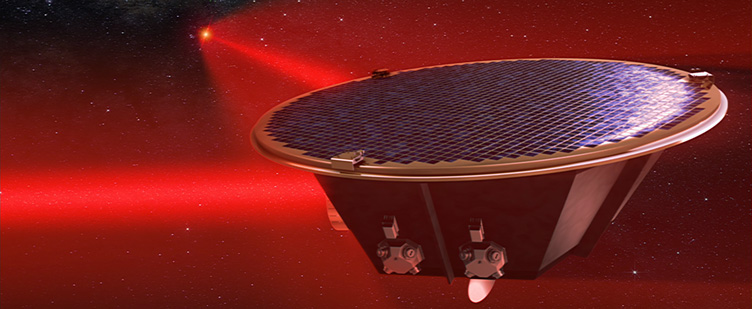
Credits: AEI/MildeMarketing/Exozet
Gravitational waves produced billions of light-years away, when they reach the Solar System, they generate fluctuations in space that are so tiny that the development of the technology capable of measuring them is one of the wonders of human ingenuity.
The first direct detection of gravitational waves happened in September 2015. Gravitational waves observatories can probe the invisible Universe, which does not emit any kind of light, but emits gravitational waves. Thus, they enable the study of the objects that produced them but we cannot see, such as black holes.
Gravitational waves and the Instituto de Astrofísica e Ciências do Espaço
The future gravitational waves observatory to be placed in space will be able to detect gravitational waves in a frequency range that cannot be detected from observatories on Earth and which are produced by other astronomical phenomena.
The Instituto de Astrofísica e Ciências do Espaço (IA) participates in the development of the technology of the LISA observatory, that the European Space Agency (ESA), in collaboration with the american agency NASA, will launch to space in 2034. LISA might be able to reveal more about the nature of gravity and how it determines the history and evolution of the Universe, one of the domains to which several researchers of IA are dedicated.
Learn more
With the support of “Gwstrings: Probing cosmic strings and other topological defects with gravitational waves”
